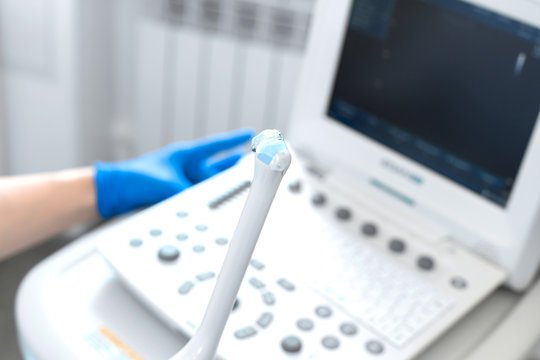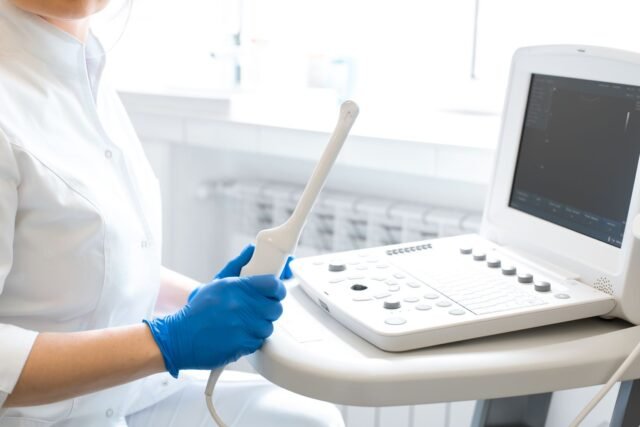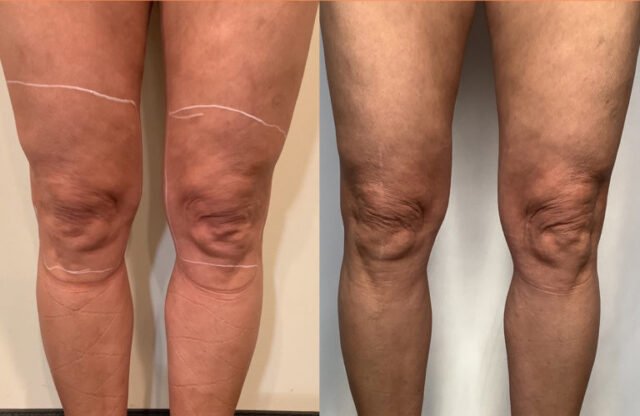Introduction to IoT in Healthcare
The Internet of Things (IoT) refers to the interconnected network of physical devices embedded with sensors, software, and other technologies that enable them to collect and exchange data. In the context of healthcare, IoT encompasses a wide array of devices and applications, from wearable health monitors and smart medical devices to connected hospital systems and remote patient management tools. These components work together to create a more integrated and efficient healthcare environment.
The current healthcare ecosystem is complex, involving multiple stakeholders including patients, healthcare providers, insurers, and technology companies. Patients demand high-quality, personalized care, while healthcare providers strive to deliver this care in a cost-effective and efficient manner. Insurers play a crucial role in funding and managing healthcare services, whereas technology companies are at the forefront of developing innovative solutions that enhance the overall healthcare experience.
IoT in healthcare holds transformative potential by addressing many of the challenges faced by this ecosystem. For instance, IoT-enabled devices can continuously monitor a patient’s vital signs, allowing for real-time health tracking and early detection of potential health issues. This real-time data collection can significantly improve patient outcomes by enabling timely medical interventions. Additionally, IoT can streamline hospital operations through smart asset management and predictive maintenance of medical equipment, thereby enhancing operational efficiencies.
Moreover, IoT fosters new models of healthcare delivery, such as telemedicine and remote patient monitoring, which can extend the reach of healthcare services to underserved and remote areas. These innovations not only improve access to care but also reduce the burden on healthcare facilities by minimizing unnecessary hospital visits and admissions. By leveraging IoT, healthcare providers can offer more proactive, preventive, and personalized care, ultimately transforming the way healthcare is delivered and experienced.
Key Innovations in IoT for Healthcare
The advent of the Internet of Things (IoT) has revolutionized the healthcare industry, leading to a myriad of innovations that enhance patient care and streamline medical processes. One of the most significant advancements is in wearable devices. Health monitoring wearables, such as smartwatches and fitness bands, track vital signs like heart rate, blood pressure, and oxygen levels. These devices provide real-time data, allowing for continuous monitoring of patients and early detection of potential health issues. Fitness trackers, on the other hand, encourage physical activity by monitoring steps, calories burned, and sleep patterns, thus promoting a healthier lifestyle.
Smart medical devices represent another critical innovation in IoT for healthcare. Smart infusion pumps, for instance, ensure accurate medication delivery by adjusting dosages based on real-time patient data. These devices reduce the risk of human error and enhance the precision of treatment. Connected imaging devices, such as smart MRI and CT scanners, enable remote diagnostics by transmitting detailed images to specialists located miles away. This not only speeds up the diagnostic process but also makes expert consultations accessible to patients in remote areas.
Telemedicine solutions have also seen significant advancements due to IoT. Remote patient monitoring systems allow for continuous health tracking, enabling healthcare providers to monitor patients with chronic conditions closely. These systems often include sensors and devices that collect data on various health parameters and transmit it to healthcare professionals for analysis. Virtual consultation platforms facilitate remote doctor-patient interactions, making healthcare services more accessible and convenient. Patients can consult with their doctors from the comfort of their homes, reducing the need for in-person visits and minimizing the risk of infection, especially crucial during pandemics.
Overall, the integration of IoT in healthcare has led to transformative innovations that improve patient outcomes, enhance the efficiency of medical procedures, and make healthcare services more accessible to all.
Applications of IoT in Healthcare
The integration of IoT technology in healthcare has revolutionized patient care management, hospital operations, and emergency response systems, bringing forth significant advancements in each area. One of the pivotal applications is in patient care management, particularly in chronic disease management. Through continuous monitoring systems, healthcare providers can track vital signs such as heart rate, blood pressure, and glucose levels in real-time. This constant flow of data enables timely interventions, reducing the risk of complications and helping in the effective management of chronic conditions.
Medication adherence systems are another crucial application of IoT in healthcare. These systems remind patients to take their medications at the prescribed times, ensuring better adherence to treatment plans. By integrating smart pill bottles and wearable devices, patients receive notifications and alerts, which significantly improve compliance and treatment outcomes. This is particularly beneficial for elderly patients and those managing multiple medications, thereby enhancing their overall health and well-being.
In the realm of hospital operations, IoT technology plays a vital role in asset tracking and management. IoT-enabled devices can track the location and status of critical medical equipment, ensuring their availability when needed and reducing the time spent searching for them. This not only enhances the efficiency of hospital operations but also minimizes downtime and ensures that healthcare professionals can focus on patient care rather than equipment logistics.
Workflow efficiency tools powered by IoT further streamline hospital processes. By automating routine tasks and providing real-time data on patient flow and resource utilization, these tools help in optimizing staffing levels, reducing wait times, and improving overall patient experience. Hospitals can achieve higher operational efficiency and deliver better care through data-driven decision-making.
Emergency response systems have also benefitted immensely from IoT technology. Real-time patient monitoring devices can transmit critical health data to medical professionals during emergencies, enabling immediate care and accurate treatment. Additionally, IoT solutions in disaster management enhance response times and coordination, ensuring timely assistance and saving lives during large-scale emergencies. These applications highlight the transformative potential of IoT in healthcare, driving improvements across various aspects of the sector.
Benefits of IoT in Healthcare
The integration of IoT in healthcare offers numerous tangible benefits that significantly enhance patient outcomes and streamline healthcare operations. One of the most prominent advantages is the ability to provide personalized, real-time care. IoT devices such as wearable health monitors and smart implants constantly gather patient data, allowing healthcare providers to tailor treatment plans based on real-time information. This continuous monitoring can also provide early warnings of potential health issues, enabling timely interventions that can prevent complications and improve overall patient health.
Another critical benefit of IoT in healthcare is cost reduction. By leveraging IoT-enabled devices, hospitals can significantly reduce readmission rates. For instance, remote patient monitoring systems allow for continuous observation of patients’ conditions after discharge, ensuring that any signs of deterioration are promptly addressed. This proactive approach not only improves patient outcomes but also reduces the financial burden associated with hospital readmissions. Furthermore, IoT technology optimizes resource usage by ensuring that medical equipment and staff are utilized efficiently, thereby cutting down on unnecessary expenses.
Operational efficiency is also greatly enhanced through the adoption of IoT in healthcare. Automated processes facilitated by IoT devices minimize manual tasks, allowing healthcare providers to focus more on patient care rather than administrative duties. For example, smart inventory management systems can automatically track the usage of medical supplies and medications, ensuring that stock levels are maintained without manual intervention. Improved data management is another key benefit, as IoT systems can seamlessly integrate and analyze vast amounts of patient data, providing healthcare professionals with actionable insights and a comprehensive understanding of patient health trends.
In summary, the implementation of IoT in healthcare brings about substantial improvements in patient care, cost efficiency, and operational effectiveness. By enabling personalized, real-time care, reducing hospital readmissions, and optimizing resource usage, IoT technology is poised to transform the healthcare landscape, making it more responsive and cost-effective.
Challenges and Limitations
The introduction of IoT in healthcare presents several challenges and limitations that must be addressed to ensure its successful implementation. One of the primary concerns is data privacy and security. As IoT devices collect vast amounts of sensitive health information, the risk of data breaches increases significantly. Protecting patient data from unauthorized access and cyberattacks is paramount. Healthcare providers and IoT solution developers must implement robust security measures, including encryption, secure authentication, and regular security audits, to safeguard this information.
Another significant challenge is the integration of IoT solutions with existing healthcare systems. Many healthcare facilities operate with legacy systems that may not be compatible with new IoT technologies. This lack of interoperability can hinder the seamless exchange of data and reduce the overall efficiency of IoT applications. To address this issue, there is a pressing need for the development and adoption of standardized protocols and frameworks. These standards will facilitate interoperability between different devices and systems, ensuring that IoT solutions can be effectively integrated into the existing healthcare infrastructure.
Regulatory compliance is also a critical consideration when implementing IoT in healthcare. Healthcare providers must adhere to a complex web of regulations and standards, such as the Health Insurance Portability and Accountability Act (HIPAA) in the United States or the General Data Protection Regulation (GDPR) in the European Union. These regulations are designed to protect patient privacy and ensure the secure handling of health data. However, they can also pose challenges for healthcare providers and IoT solution developers, who must navigate these regulatory requirements while implementing new technologies. Ensuring compliance often requires significant investments in time, resources, and expertise.
Addressing these challenges and limitations is essential for the successful adoption of IoT in healthcare. By prioritizing data security, promoting interoperability, and ensuring regulatory compliance, healthcare providers can harness the full potential of IoT technologies to improve patient outcomes and streamline healthcare operations.
Future Trends in IoT Healthcare
The landscape of IoT in healthcare is rapidly evolving, propelled by advancements in various technologies that promise to revolutionize patient care and medical practices. One of the most significant future trends is the integration of artificial intelligence (AI) and machine learning (ML) with IoT devices. These technologies will enable predictive analytics, offering healthcare providers advanced decision-making capabilities. For instance, AI algorithms can analyze data from IoT-enabled devices to predict patient deterioration, allowing for timely interventions and potentially saving lives. Predictive analytics can also optimize hospital operations, such as predicting patient admission rates and managing resources more efficiently.
Another promising development is the advancement of wearable technology. Future iterations of wearables are expected to include more accurate sensors and longer battery life, enhancing their usability and reliability. These wearables can monitor a range of vital signs including heart rate, blood pressure, and glucose levels, providing continuous health data that can be shared with healthcare providers in real time. This continuous monitoring facilitates proactive healthcare management, enabling early detection of potential health issues and personalized treatment plans.
The expansion of telehealth services is also expected to gain momentum, supported by the integration of IoT devices. As telehealth becomes more widespread, the role of IoT in remote care settings will become increasingly crucial. IoT devices can collect and transmit patient data to healthcare professionals, ensuring continuous monitoring and timely medical advice without the need for in-person visits. This is particularly beneficial for managing chronic conditions, post-operative care, and providing medical support in rural or underserved areas.
In summary, the future of IoT in healthcare looks promising with the integration of AI and machine learning, advancements in wearable technology, and the expansion of telehealth services. These trends are set to enhance patient care, improve healthcare outcomes, and streamline medical operations, making IoT an indispensable component of modern healthcare systems.
Case Studies
In the realm of healthcare, the integration of IoT technologies has seen numerous successful implementations, showcasing its transformative potential. One notable example is the adoption of IoT in remote patient monitoring. In a pilot project conducted by a leading hospital, wearable devices equipped with sensors were provided to patients with chronic illnesses. These devices continuously monitored vital signs such as heart rate, blood pressure, and glucose levels, transmitting data in real-time to healthcare providers. The outcome was a significant reduction in hospital readmissions and emergency visits, as clinicians could intervene promptly based on the data received. This case highlights how IoT in healthcare can enhance patient management, improving both patient outcomes and operational efficiency.
Another successful implementation involved IoT-enabled smart hospital rooms. A major medical center implemented a system where interconnected devices controlled room lighting, temperature, and even patient beds. These adjustments were automatically made based on patient preferences and medical needs. The technology also integrated with electronic health records, ensuring that healthcare providers had seamless access to patient information. The result was an enhanced patient experience and increased staff productivity, as routine tasks were automated, allowing caregivers to focus more on direct patient care.
However, not all IoT in healthcare initiatives have been without challenges. A notable failed project involved the deployment of IoT sensors for tracking hospital assets. The project faced significant setbacks due to poor network connectivity and inadequate data security measures. These issues led to frequent system downtimes and breaches, ultimately resulting in the project’s termination. Lessons learned from this failure emphasize the importance of robust network infrastructure and stringent security protocols when implementing IoT solutions in healthcare.
These case studies underscore the dual-edged nature of IoT in healthcare. While successful implementations can lead to remarkable improvements in patient care and operational efficiency, failures often stem from overlooked technical and security challenges. Future projects can benefit from these insights, ensuring more reliable and secure IoT deployments in the healthcare sector.
Conclusion
The integration of IoT in healthcare has revolutionized the sector, providing numerous benefits ranging from enhanced patient care to streamlined operational efficiencies. As highlighted throughout this blog post, IoT technologies have enabled real-time monitoring, improved diagnostics, and personalized treatment plans, thereby significantly improving patient outcomes. The ability to gather and analyze vast amounts of data has empowered healthcare providers to make more informed decisions, ultimately fostering a more proactive approach to healthcare management.
Another critical advantage of IoT in healthcare is the increased accessibility to medical services. Remote patient monitoring and telehealth solutions have bridged the gap between patients and healthcare providers, making it easier for individuals, especially those in remote or underserved areas, to receive timely medical attention. This democratization of healthcare services ensures that quality care is not confined to urban centers but is available to a broader population.
Looking towards the future, the potential developments in IoT within the healthcare sector appear promising. Ongoing research and advancements in artificial intelligence, machine learning, and data analytics are expected to further enhance the capabilities of IoT devices. Predictive analytics, for instance, could foresee potential health issues before they manifest, enabling even more preemptive interventions. Additionally, the continuous improvement of cybersecurity measures will be crucial in safeguarding sensitive patient data as IoT adoption expands.
In conclusion, the transformative impact of IoT in healthcare is undeniable. As technologies continue to evolve, the healthcare sector will witness even more innovative applications, leading to improved patient care and operational efficiencies. Stakeholders, including healthcare providers, technology developers, and policymakers, must collaborate to harness the full potential of IoT, ensuring that its benefits are maximized while addressing any challenges that arise. By doing so, we can look forward to a future where healthcare is more accessible, efficient, and personalized, ultimately enhancing the quality of life for individuals worldwide.





















